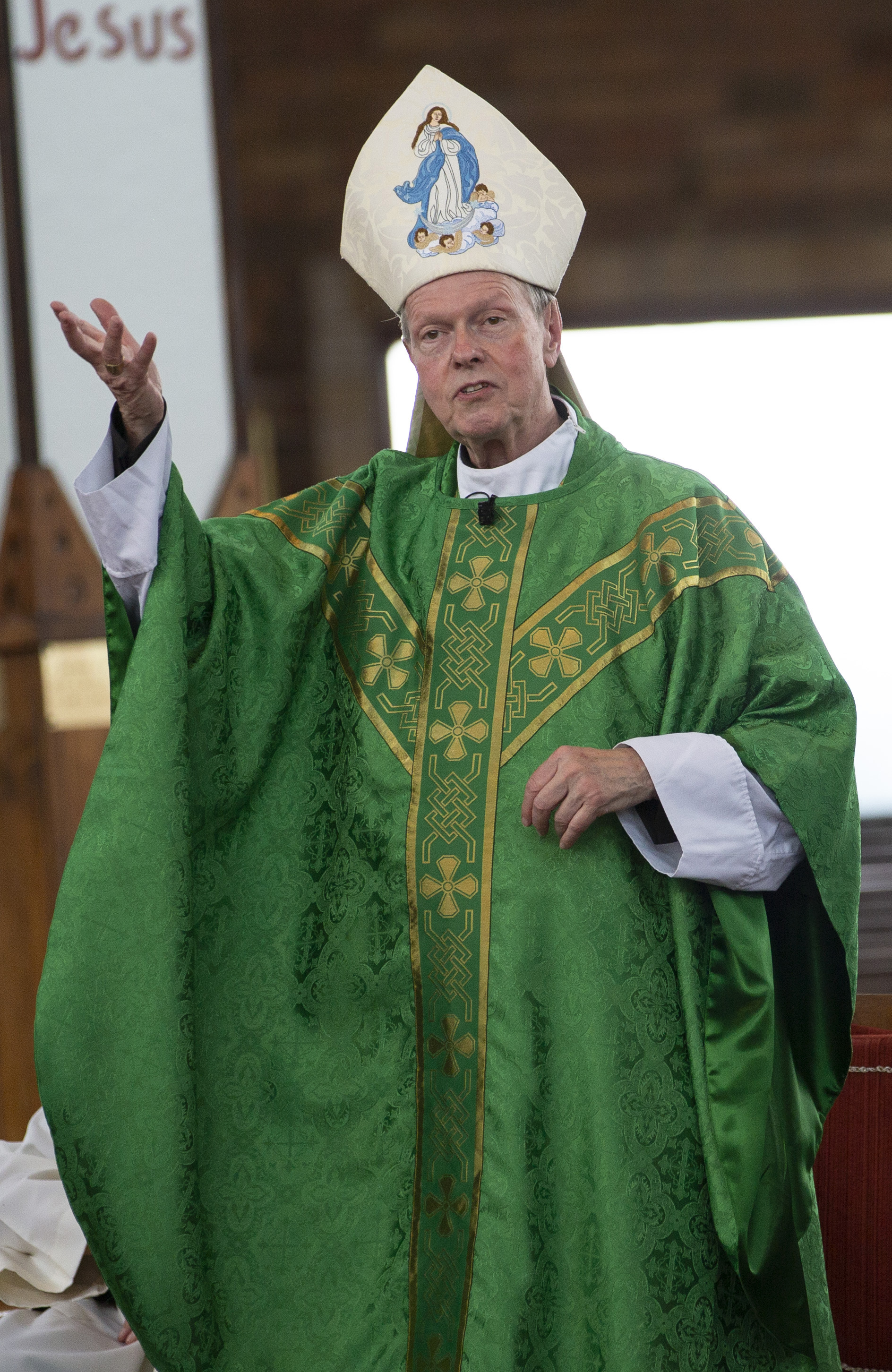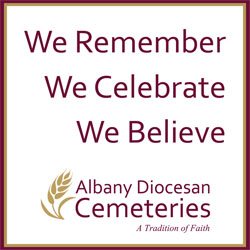November 6, 2019 at 3:53 p.m.
In Apex, N.C., a town just outside of Raleigh, sits the lively St. Mary Magdalene Church.
The southern parish — which attracts around 2,000 Catholic parishioners each week — has seen a continuous growth in the size of its church. In an article in the Wall Street Journal, people in the parish were interviewed about the resurgence of suburban towns across the country, consequently leading to more parishioners coming to areas such as Apex.
To keep up with the growth, the parish needed to build a new sanctuary and larger worship space. What makes it so special? The new church, which opened in 2017 with a dedication Mass, includes stained glass windows from two closed parishes in the Albany Diocese.
The two churches, both from the city of Troy, were St. Paul the Apostle in Troy’s Beman Park neighborhood, and St. Peter’s just north of downtown Troy. Both parishes closed in 2009, leaving behind two empty buildings in their wake and sets of beautiful stained glass windows, including a striking Rose window, with its rich, ruby coloring, for the taking.
Rev. Donal Staib, pastor of St. Mary Magdalene, said that the windows — depicting biblical scenes of Mary Magdalene amongst others — were some of the first purchases made toward building the new church. They were so breathtaking, he said, that much of the new church’s design was constructed with the windows in mind.
“We built around the windows,” said Father Staib. “The first one I saw was simply magnificent. The windows are the connection we have to the past.”
St. Peter’s parish was founded in 1824 by Rev. Peter Heavens. At the time of its closing, it was the oldest church in Troy and the third-oldest Catholic church in New York State. St. Paul the Apostle, established in 1890, carried heavy Germanic influences in its architecture, specifically in the standout stained glass windows that were designed by the world famous firm Franz Mayer & Co., of Munich, Germany and renowned for its Munich glass.
How then did these windows, historically tied to some of the oldest parishes in upstate New York, make their way to North Carolina?
Lori Chera, assistant to the director of real property for the Diocese of Albany, said that after a parish is closed, items left over — be it furniture, pews or stained glass windows — can first be claimed by other local parishes. Since many parishioners will migrate to another nearby parish to worship, having local priests claim pieces of the closed church can offer a sense of familiarity for new parishioners, while also ensuring the items are being put to use.
After this, companies or businesses that exist specifically to reclaim and salvage old church antiques and furnishings can swoop in to claim and resell leftover religious items. These companies act as a “thrift shop” of sorts for religious items, allowing churches to purchase items online from places all across the country. A quick google search of “Church stained glass windows for sale,” offers numerous online companies, such as www.usedchurchitems.com and www.dcriggott.com, that sell a plethora of stained glass windows
After St. Paul’s and St. Peter’s closed, a New Jersey-based reclamation company purchased some of the stained glass windows and placed an advertisement on its website. Meanwhile, Joan Keary, a parishioner of St. Mary Magdalene, was helping Father Staib hunt online for items for the new church. A former professor of art and art history at the University of Rochester, Keary thought to poke around in her old stomping grounds in the Northeast.
That’s when she found the windows and, according to Keary, it was love at first sight: “When you fall in love with something, you want to make sure you have it.”
The parish was able to take in eight new stained glass windows: The Annunciation, The Baptism of Jesus, The Woman at the Well and Christ Appears to St. Mary Magdalene at the Tomb came from St. Peter’s; while St. Peter, the Rose Window with St. Cecilia, St. Mary Magdalene and another untitled window came from St. Paul’s.
Keary knew the windows would have to be sent out and completely restored — after all they were from the late 1800s — but once parishioners heard about the window project, it wasn’t long before everything was paid for.
The only window not paid for by parishioners was the Rose window, which was paid for voluntarily by the Knights of Columbus. “There wasn’t any fundraising,” said Keary. “Parishioners were paying out of pocket.”
Keary said that it has been “a privilege” to be the new home to such beautiful pieces of art.
“It really enhances our Church and it links the modern with the old,” she said. “They make me smile.”
MORE NEWS STORIES
- Cordoba cathedral fire quickly extinguished despite dramatic flames
- Federal judge in Maryland blocks Trump birthright citizenship order
- Nagasaki monastery, Pope’s message to KofC, Blessed Pier Giorgio Frassati | Week in Review
- Pope Leo tops Gallup world leader poll, across party lines
- Green card policy change may leave immigrants seeking legal status vulnerable to deportation
- Apostolates in Minnesota archdiocese focus on missionary discipleship at historic meeting
- Legacy of Japan’s champion of medicine, faith who persevered after atomic bomb endures
- Reckoning with empire: A Catholic critique of American foreign policy in a nuclear age
- Father Lafleur: Forgotten story of chaplain to POWs in WWII and his ‘incredible selflessness’
- Antisemitism has ‘no place’ here, says St. Louis archbishop after attack











Comments:
You must login to comment.